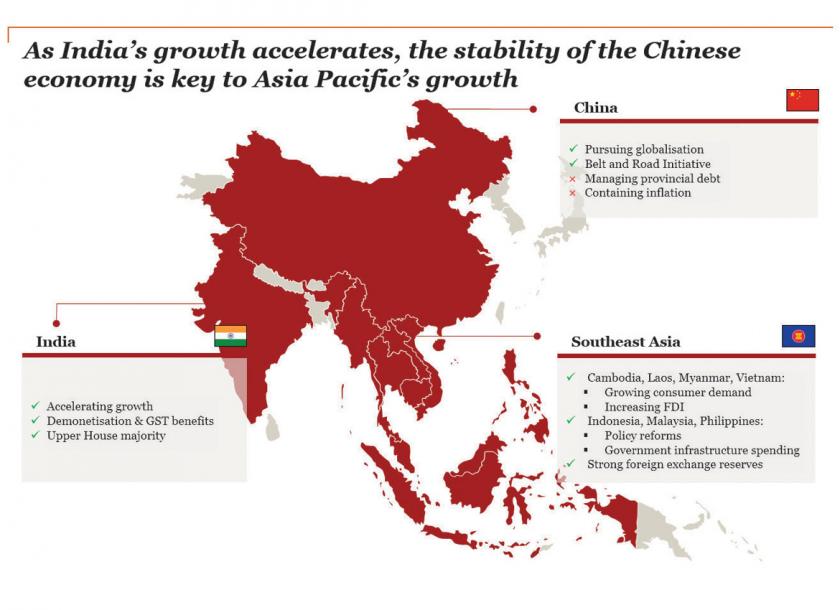Myanmar: Regional economy supported by India’s accelerated growth: PwC
Myanmar is set to represent one of the fast growing economies this year but it will be affected by India’s growth acceleration as well as the stability of the Chinese economy, according to PwC Growth Markets Centre.
David Wijeratne, Gagan Oberoi and Neu Boon Ling from the centre said that 2018 has so far given boost to a general feeling of optimism about the world economy with both developed and emerging economies contributing to global economic growth. This development is fueled by the benefits of structural reforms in key emerging markets such as Mexico and India, strengthening commodity prices, growing and stable demand from developed markets, in particular the Europe Union and Japan, and Chinese fiscal stimulus.
At the same time, the centre conceded that this growth will be tempered by interest rate hikes in developed markets, led by the US, and inflationary pressures and political elections in certain emerging economies.
Protectionism and trade tensions, particularly between the US and China, and geopolitical tensions with North Korea, Iran and Qatar, will further affect economic growth.
In parallel to this is the issue of productivity, which is a core area of improvement for all emerging economies. Nonetheless, it looks like the collective GDP for emerging markets is poised to rise modestly by 4.9pc, thereby stimulating investor interest. PwC Growth Markets Centre has summarised the analysis on major regions in the Asia Pacific below:
India
India’s growth looks set to accelerate, as the negative impacts from demonetisation and the implementation of the new “Goods and Services Tax” start to dissipate. Supplementing these two major reforms, there have been a series of initiatives adopted to ease doing business and facilitate foreign direct investment from big investors such as Japan and South Korea. Next on the Modi agenda will be to gain a majority in the Rajya Sabha, the second legislature, following the April elections, which will facilitate his push for more controversial, but much-needed reforms such as land acquisition.
China
Following Chinese President Xi Jinping’s consolidation of power, at last year’s 19th Party Congress, China will continue its globalisation agenda, the pace of which will depend on how it addresses the concerns from neighbouring regions.
Globalisation will be balanced against domestic needs, specifically managing provincial debt, cooling the housing market, addressing industrial surplus and containing inflation. On balance, these measures look to support real GDP growth of 6 .5pc in 2018. The country will no doubt pursue these priorities with one eye on any US policies aimed at reducing its trade deficit with China.
Southeast Asia
The Southeast Asian region looks to maintain its strong economic growth story in 2018, benefiting from an international trade boom, while preparing itself for any effects from interest rate hikes in key investor markets such as the US and a series of elections in Malaysia, Thailand, and Indonesia. Generally, the basis of this growth looks to broaden beyond manufacturing and electronics, providing opportunities for investment from other sectors.
Cambodia, Laos, Myanmar and Vietnam, will continue to represent the fastest growing economies, registering strong 6-8pc GDP growth, thanks mainly to increasing consumer demand, rising inward investment and growing intra-regional trade, while policy reforms and rising public infrastructure spending will drive growth in the larger economies of Indonesia, Malaysia and the Philippines. Many of these markets have strengthened their position by building foreign exchange reserves to protect themselves against capital flow volatility.
Source: https://www.mmtimes.com/news/regional-economy-supported-indias-accelerated-growth-pwc.html


 English
English




